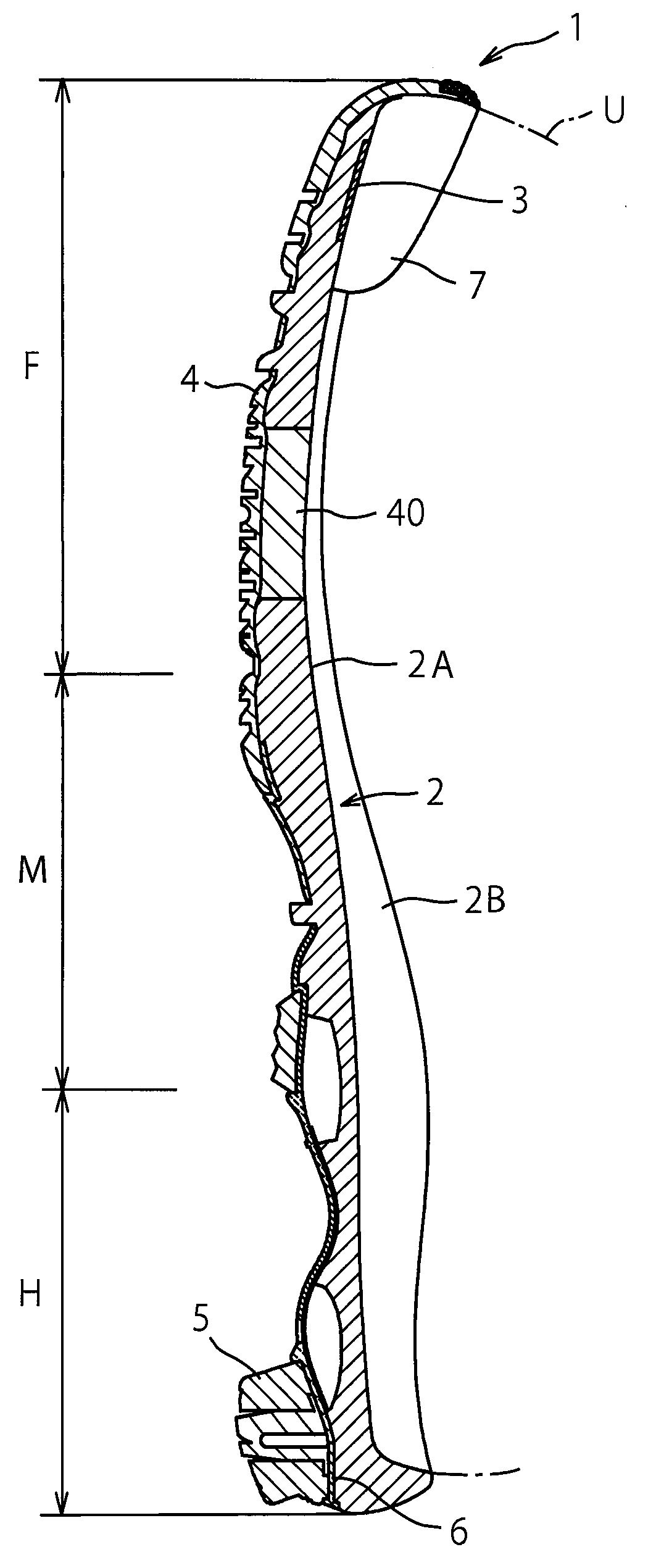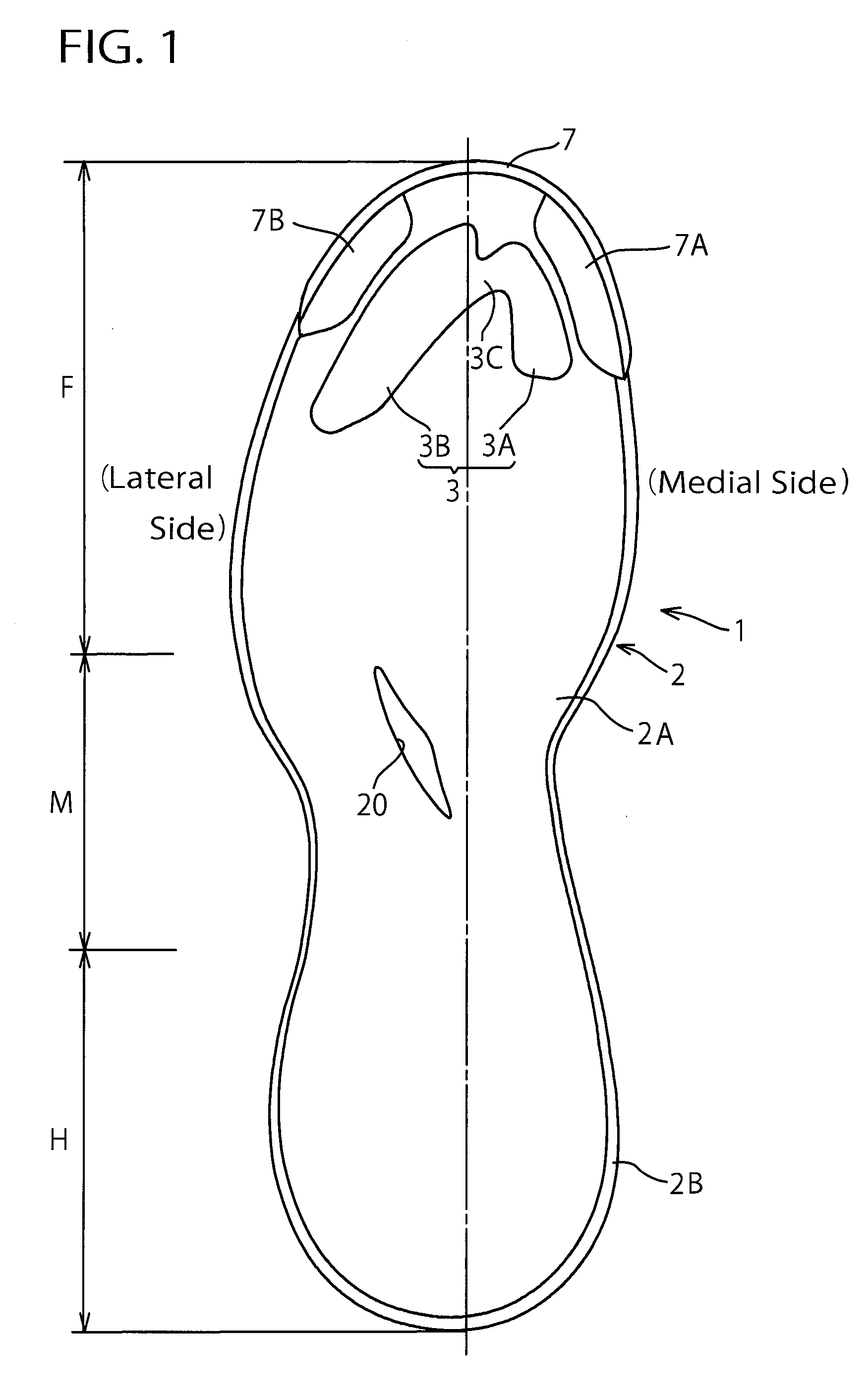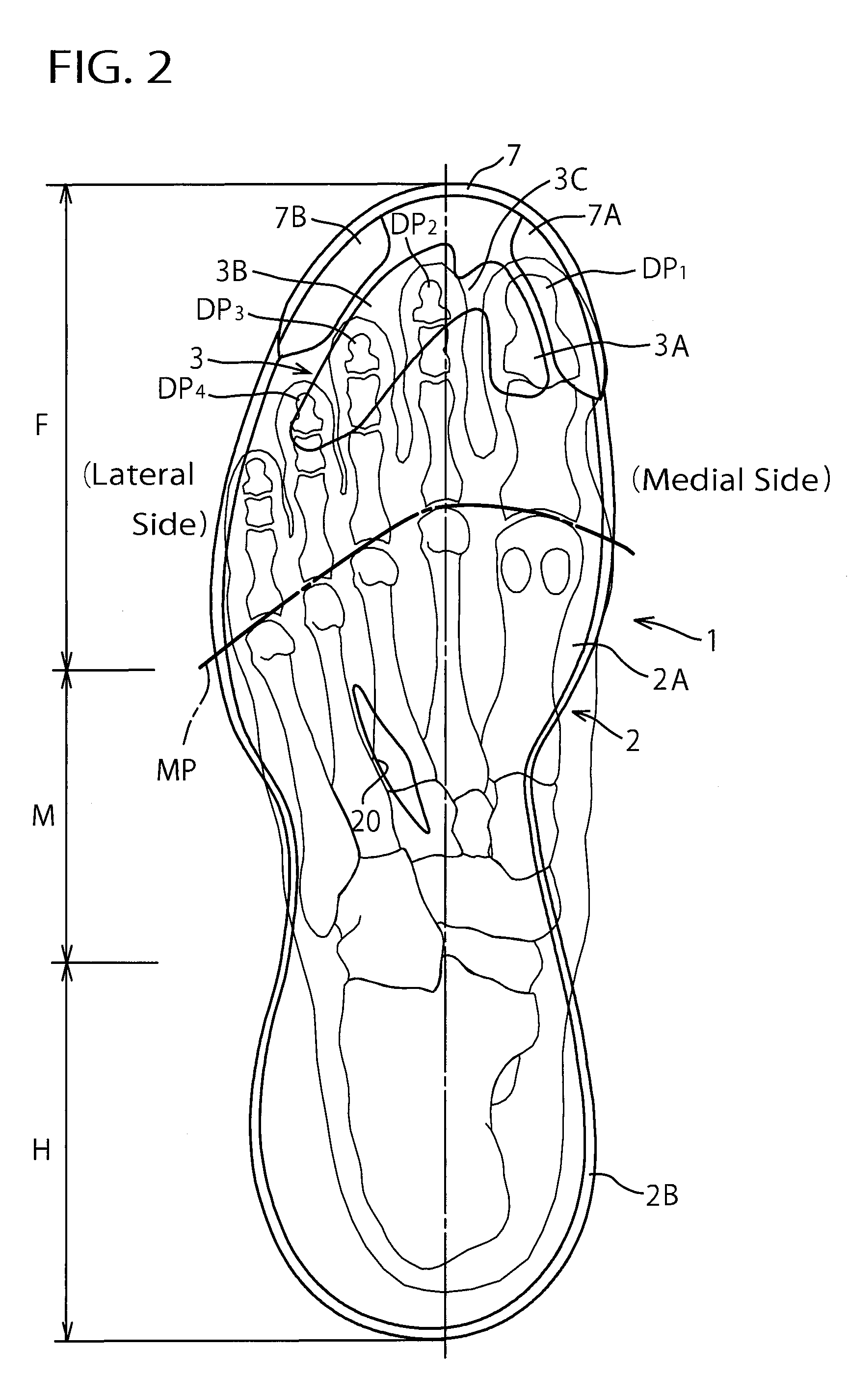Sole Structure for a Sport Shoe
a technology for sports shoes and soles, applied in the direction of uppers, bootlegs, stiffners, etc., can solve the problems of insufficient, further increase of accelerating force, and inadequate conformity of prior-art structures, so as to achieve greater resiliency, increase accelerating force, and increase hardness
- Summary
- Abstract
- Description
- Claims
- Application Information
AI Technical Summary
Benefits of technology
Problems solved by technology
Method used
Image
Examples
first embodiment
[0027]FIGS. 1 to 6 show a sole structure for a sport shoe according to a first embodiment of the present invention. Here, an indoor shoe used in indoor sports such as volleyball, handball or the like is taken as an example of the sport shoe.
[0028]As shown in FIGS. 1 to 3, Sole structure 1 according to the present embodiment includes a sole body 2. The sole body 2 has a heel region H, a midfoot region M, and a forefoot region F that respectively correspond to a heel part, a midfoot part, and a forefoot part of a foot of a shoe wearer. The sole body 2 extends longitudinally from the heel region H through the midfoot region M to the forefoot region F. The sole body 2 has a foot sole contact surface 2A that is disposed on a foot sole contact side of the wearer.
[0029]On the foot sole contact surface 2A of the sole body 2, there is formed an upraised portion 2B that rises upwardly (i.e. out of the pages of FIGS. 1 and 2, to the right side of FIG. 3) along an approximately entire outer cir...
second embodiment
[0053]FIGS. 12 and 13 show a sole structure for a sport shoe according to a second embodiment of the present invention. In these drawings, the same reference numbers as those of the first embodiment indicate identical or similar elements.
[0054]The second embodiment differs from the above-mentioned first embodiment in that respective protruding portions 7A′, 7B′ of the toe guard 7 protrude further inwardly than the respective protruding portions 7A, 7B of the toe guard 7 in the first embodiment and the plate-like member 3 in the first embodiment is not provided. In this case, the protruding portion 7A′ corresponds to the first plate-like portion 3A in the first embodiment and the protruding portion 7B′ corresponds to the second plate-like portion 3B in the first embodiment. Also, in this case, a member corresponding to the narrow part 3C in the first embodiment is not provided and there is formed a gap between the protruding portions 7A′ and 7B′.
[0055]In other words, in this second e...
first alternative embodiment
[0061]In the first embodiment, as the plate-like member 3, a deformed M-shaped member in a planar shape was taken for an example (see FIG. 1), but the planar shape of the plate-like member 3 is not limited to such a shape. The plate-like member 3 may include the first plate-like portion 3A that overlaps at least partially with the first toe (preferably, the first distal phalanx), the second plate-like portion 3B that overlaps at least partially with the second to fourth toes (preferably, the second to fourth distal phalanges), and the narrow part 3C disposed therebetween. Other any shapes can be adopted.
PUM
| Property | Measurement | Unit |
|---|---|---|
| Electric charge | aaaaa | aaaaa |
| Length | aaaaa | aaaaa |
| Force | aaaaa | aaaaa |
Abstract
Description
Claims
Application Information
 Login to View More
Login to View More - R&D
- Intellectual Property
- Life Sciences
- Materials
- Tech Scout
- Unparalleled Data Quality
- Higher Quality Content
- 60% Fewer Hallucinations
Browse by: Latest US Patents, China's latest patents, Technical Efficacy Thesaurus, Application Domain, Technology Topic, Popular Technical Reports.
© 2025 PatSnap. All rights reserved.Legal|Privacy policy|Modern Slavery Act Transparency Statement|Sitemap|About US| Contact US: help@patsnap.com



